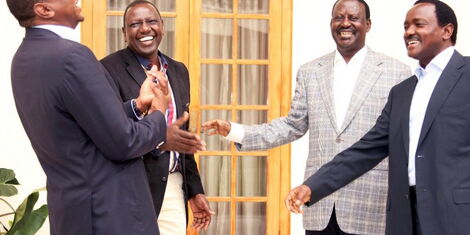
When Kenyans cast their ballots to pick the president, the roles played by ethnicity and tribalism are likely to be decisive. A youth alliance armed with a hashtag is hoping to end tribalism and its legacy in politics.
Every Thursday the hashtag #Tribeless youths trends on Twitter and other Social Media platform.
It is an initiative launched by young Kenyans who are tired of tribal politics. They hope to change Kenya’s long history of going back to ethnic groups during election years.
“I believe young people have the power because we make up the biggest number now, at 64 percent of general voters,” Wanjiku Kihika, the founder of the Tribeless alliance said.

“We have an influence of over 3.5 million young people on Twitter and other social media. We also carry out grassroots drives to sensitize young people to shun tribalism and vote wisely,” she told DW, adding that the movement is about “embracing each other’s diversities.”
Kihika said that although politicians are not keen to tackle tribalism since it plays to their advantage, the new generation will ultimately break the chains of tribalism.

“The only tribes we have in Kenya are the rich and poor,” she said.
Kenyan politics have been characterized by ethnic tensions since independence in 1963. But it was not until 2007 that the demons of tribalism really flared up after the hotly disputed national elections.
The clashes mainly between the larger ethnic tribes, the Kikuyus, Luos and Kalenjins, erupted after Mwai Kibaki from the Kikuyu community was declared the winner amidst accusation of rigging and electoral manipulation.
Analysts such as Brian Wanyama say ethnicity per se has never been the problem. The dilemma arises when politicians use ethnicity for their personal gain and create a divide which breeds tribalism.
Colonialism and tribal divide
Tribalism in Kenya dates back to the colonial era. From 1920 to 1963, Kenya was under the rule of the British who used the divide and rule method of governing. For years they played one community against another, in particular, the Kikuyus and Luos whom they considered a threat owing to their big numbers.

“In the traditional society, the issue of belonging to a tribe was not a big issue until and during the fight for independence,” Nairobi-based analyst Brian Wanyama told DW.
The first two political parties before and during independence Kenya – the Kenya Africa National Union (KANU) and the Kenya African Democratic Union (KADU) – propelled current tribal politics in the country. KANU was a Kikuyu and Luo alliance party while KADU was comprised of other small tribes who feared domination by KANU. KADU was founded by Daniel Arap Moi, a Kalenjin from Rift valley.

President Jomo Kenyatta (father of incumbent president Uhuru Kenyatta) was accused of sidelining the Luos, in particular, Jaramongi Odinga( father of current opposition leader Raila Odinga) in favor of Moi who succeeded him in 1978 as the second president of Kenya.
During his period in office until 2002, Moi was accused of perpetuating the politics of divide and rule. His presidency was also marked by tribal animosities.

The major outbreak of clashes happened in 1992 in the Rift valley’s Molo region which left 5,000 people dead and another 75,000 displaced.
The conflict was primarily between Kalenjin and Kikuyu communities. Land ownership and disputes were cited as some of the key reasons for the conflict.